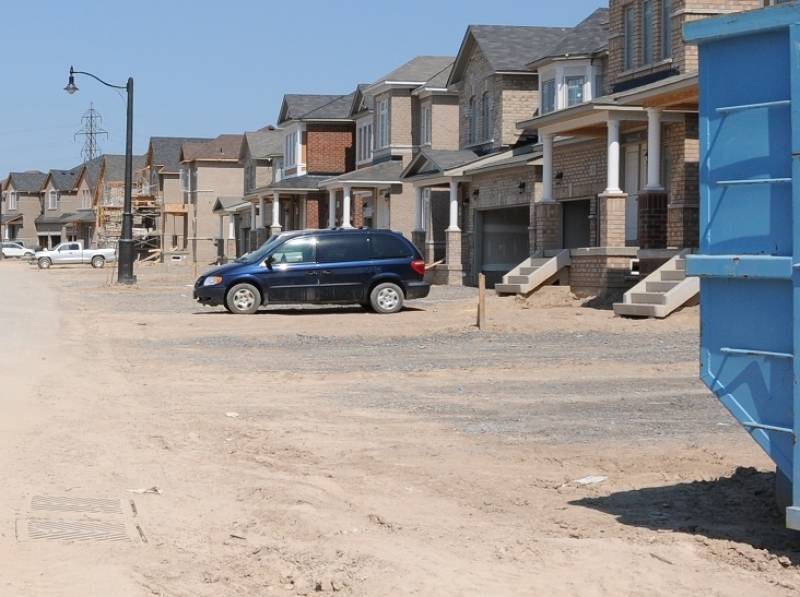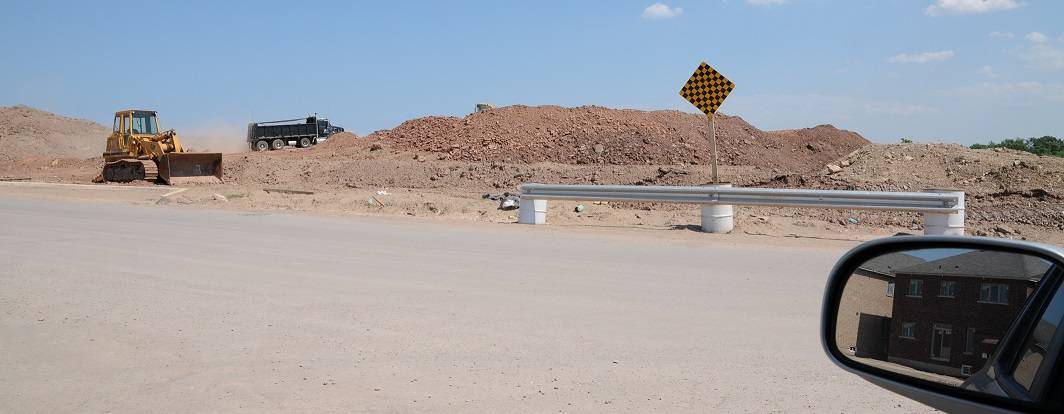Why is it so Difficult to Establish New Landscape Plants in Suburban Soils?
The following is an excerpt from our Mycorrhizal Science web page:
It’s not much of a stretch to imagine that the way we build our roads, homes, shopping malls and schools is hard on the living microbes in the already fragile topsoil left behind by land speculators. The heavy equipment rumbles onto a long-abandoned, weed-infested field, and the first job is to strip the surface bare of anything that looks darker in colour than the subsoil below.

Theoretically, this material has value to the builder – so the bulldozers and earthmovers pile it high and crush it into giant piles before the basements are dug, and the services are laid deep beneath the new roadbeds. Subsoil (containing only anaerobic bacteria – toxic to plant roots) is brought to the surface and compacted into new gradients designed to quickly drain rainfall off of the land. Most of the ‘topsoil’ pile will be sold-off by the builder to a 3rd party who will put it into bags and sell it back to consumers at a garden centre near you. The remainder of the ‘topsoil’ pile is left to bake in the sun and grow weeds (often for several years). Ultimately this crushed and desiccated ‘topsoil’ will be thinly spread over the compacted subsoil of the new development and covered with sod. That’s it – over to the new homeowner (and the landscape contractor who is meant to re-make it into an instant oasis). Is it any wonder that landscape plants often struggle or fail outright in these beaten-up, lifeless soils?

Does Restoring the Mycorrhizal Fungi Native to Healthy Undisturbed Soils Help Plants in Urban Landscapes?
Well, it seemed like a good idea to us – let’s go out into undisturbed natural ecosystems and see which mycorrhizae plants like to work with, and then deliver those essential microbes into the urban soils where plants are struggling. Would plants installed into new landscapes perform better when inoculated with mycorrhizae? In short - yes - it worked. Check out our Research Webpage for more information. And, you can also check-out our narrated presentation about the damage done to microbial soil life when we build our urban environments.
